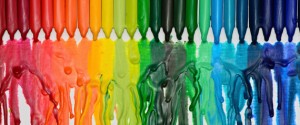 Many people have long associated different colors with moods. This is why we see so much red around Valentine’s Day – because red is the color associated with love, romance and passion. And when someone is feeling down, we commonly say they are feeling blue, because blue is associated with a subdued state of mind. These color associations are deeply ingrained within our culture, but something that many people do not know is that experts have studied the effects of different colors on people’s moods and have created official studies stating which colors are associated with which moods. They are not absolute, but rather represent the most common correlations between color and mood. Some strongly resemble the correlations that people have made culturally while others may surprise people.
Many people have long associated different colors with moods. This is why we see so much red around Valentine’s Day – because red is the color associated with love, romance and passion. And when someone is feeling down, we commonly say they are feeling blue, because blue is associated with a subdued state of mind. These color associations are deeply ingrained within our culture, but something that many people do not know is that experts have studied the effects of different colors on people’s moods and have created official studies stating which colors are associated with which moods. They are not absolute, but rather represent the most common correlations between color and mood. Some strongly resemble the correlations that people have made culturally while others may surprise people.
There is still a long way for color psychology to come, but what we know for certain is that ranges of colors have a particular range of effects on their human observer, and that these effects can be subjective in nature. In Western culture, white often symbolizes purity and virtue, but in many Eastern cultures, it represents mourning. The most absolute way of understanding color psychology is generalizing certain ranges of colors. Red, orange and yellow are associated with stimulation, ranging from happiness to tension. Blue, purple and green are associated with depressive qualities, ranging from calm to sadness.
You can see color psychology used in interior decorating, marketing and any design related fields. Professions that involve selling have long made use of color psychology to influence their client’s moods and decisions. The more you learn about color psychology and how it relates to moods, the more you can begin to apply this information to your personal space and possessions. Many people have applied this information to the personal decorating scheme in their home, office and even their vehicles. It is a valuable tool considering it can influence you towards energy, calmness clarity and happiness.